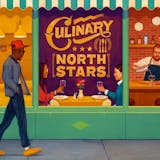More than a quarter of black Americans are poor. But the majority of poor Americans are white. These two facts tell us a great deal about the gulf separating the worlds of black and white in America. They also explain how unsurprising it is that current race relations have led to the killings of blacks by the police and of the police by blacks. Finally, they explain the resurgence of the exploitation of race hatred for political advantage by white demagogues.
Let's begin with numbers that do not lie. According to the U.S. Census Bureau, of the 36 million black Americans in the last official count, 9.4 million or 26 percent fell below the official poverty line of $23,550 in income for a household of four in 2013. The same survey found almost 26 million white Americans living in poverty, about 12 percent of the total.
In other words, more than twice as many whites as blacks were poor in absolute number. But in proportion to population, about 1 in 10 whites were poor, compared with 1 in 4 blacks. In 43 out of 50 states and the District of Columbia, black poverty exceeded 20 percent; in four states (Iowa, Maine, Mississippi and Wisconsin), black poverty rates were over 35 percent.
Research in 2014 by Stanford University economics Prof. Raj Chetty using tax data found that areas in the U.S. with greater income inequality also have less upward mobility for children from low-income families. This is the so-called "Great Gatsby Curve." In Charlotte, N.C., for example, a child whose household ranks in the lowest fifth for income has less than a 5 percent chance of reaching the top income fifth in his or her lifetime.
Middle- and upper-middle-class white Americans remain largely removed from the black poor (forget about the rich, who don't encounter poor blacks except on the freeway or as servants). But poor whites, even if they do not live with or near the black poor, compete for low-paying jobs with them and are much more likely to be affected by violent crime, regardless of its racial origin.
The poor — both white and black — are trapped by the Gatsby Curve on the bottom, looking up with little to hope for and much to fear.
Since (and despite) efforts at desegregation beginning in the 1960s, the poor of both races have thus been slowly left further and further behind. The festering resentment of poor whites has been fertile ground for the seeds of reaction. Thirty years ago, as affirmative action began to lift blacks into previously white educational and business positions, it was the black middle class that was most able and prepared to take advantage of these opportunities, while the black poor mostly stayed where they were. Poor whites, meanwhile, wondered why they were deemed less worthy of the attention given to blacks who were already one step ahead of them, and their hatred began slowly to burn.
As white supremacist and Donald Trump admirer David Duke said: "Affirmative action is a very nice term for racial discrimination against better-qualified white people in jobs, employment, promotions and scholarships, and college admittance."



